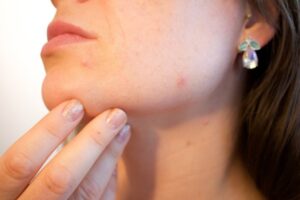Having clear, radiant, and even-toned skin is something many people aspire to achieve. Yet, pigmentation issues such as dark spots, freckles, melasma, and uneven skin tone are common problems that can affect anyone, regardless of age or gender. These conditions may not cause physical discomfort, but they can significantly impact one’s confidence and overall appearance. In a tropical climate like Singapore, where the sun’s ultraviolet (UV) rays are strong all year round, pigmentation concerns are especially prevalent.
A growing number of people are turning to skin pigmentation removal Singapore treatments for their proven ability to target discoloration, reduce dark spots, and rejuvenate the skin. These advanced dermatological solutions not only restore a more even complexion but also promote healthier, clearer skin overall. This article explores the common causes of pigmentation, how professional removal treatments work, and why achieving an even skin tone is not only a matter of beauty but also an important part of maintaining long-term skin health.

Table of Contents
Understanding Skin Pigmentation
What Is Pigmentation?
Pigmentation refers to the natural colouring of the skin, determined primarily by melanin, a pigment produced by cells called melanocytes. When melanin production becomes uneven or excessive, it leads to visible dark patches or spots on the skin. This imbalance can occur due to a variety of internal and external factors, resulting in different types of pigmentation disorders.
Common Causes of Pigmentation
There are several reasons why pigmentation develops, including:
- Sun exposure: Prolonged UV exposure stimulates melanin production, resulting in sunspots or freckles.
- Hormonal changes: Hormonal fluctuations during pregnancy or the use of birth control pills can trigger melasma, which presents as brownish patches on the face.
- Post-inflammatory hyperpigmentation (PIH): This type of pigmentation occurs after acne, injury, or inflammation, leaving behind dark marks on the skin.
- Aging: Over time, sun exposure and a slowdown in skin renewal can lead to age spots or liver spots.
- Genetics: Some individuals are more prone to pigmentation due to their genetic makeup.
Understanding what causes pigmentation is key to determining the most suitable treatment approach.
Types of Skin Pigmentation
Different forms of pigmentation require different treatments. Common types include:
- Melasma: Often appears as symmetrical brown patches on the cheeks, forehead, or upper lip, and is influenced by hormonal factors.
- Freckles: Small brown spots that appear on sun-exposed areas, common among individuals with fair skin.
- Sunspots or Lentigines: Caused by long-term sun exposure, they typically appear on the face, hands, and shoulders.
- Post-inflammatory Hyperpigmentation: Dark spots that develop after acne, eczema, or skin trauma.
Because pigmentation occurs at different skin depths, a dermatologist’s evaluation is essential for identifying the right treatment plan.
How Skin Pigmentation Removal Works
Skin pigmentation removal Singapore treatments target the excess melanin in the skin. The most common and effective method is laser therapy, which uses focused light energy to break down pigment particles into smaller fragments. These fragments are then naturally eliminated by the body’s immune system over time.
Laser Pigmentation Removal
Laser treatments are precise, non-invasive, and suitable for various pigmentation issues. Depending on the severity and depth of the pigmentation, dermatologists may recommend different types of lasers:
- Q-switched Nd:YAG laser: Known for treating deep pigmentation, such as melasma and age spots.
- Pico laser: Uses ultra-short pulses of energy to shatter pigment particles more efficiently, offering faster results with minimal downtime.
- Fractional laser: Helps resurface the skin, improving both pigmentation and overall texture by stimulating collagen production.
Laser treatments are often performed in sessions, spaced a few weeks apart, to allow the skin to heal and renew between each session.
Chemical Peels
Chemical peels are another popular option for pigmentation removal. They work by exfoliating the upper layer of skin to remove damaged cells and stimulate new cell growth. Peels can be mild, medium, or deep, depending on the type of pigmentation and the desired results.
Topical Treatments
Dermatologists may also prescribe topical creams that contain ingredients like hydroquinone, retinoids, or vitamin C. These formulations help reduce melanin production and improve skin brightness over time.
Combination Therapy
In many cases, dermatologists combine multiple treatments, such as laser therapy with chemical peels or topical creams. This approach helps achieve more comprehensive and long-lasting results, especially for stubborn pigmentation like melasma or PIH.
Benefits of Pigmentation Removal
The primary goal of pigmentation treatment is to create a more even and radiant complexion. However, there are several other benefits that extend beyond aesthetic improvement.
Enhanced Skin Clarity
Removing unwanted pigmentation restores a clearer complexion, giving the skin a fresher and healthier look.
Improved Confidence
Many individuals feel more confident when their skin tone is even, as it enhances their natural beauty and reduces the need for heavy makeup.
Skin Rejuvenation
Laser and chemical peel treatments stimulate collagen production, improving skin elasticity and smoothness. This results in an overall rejuvenated appearance.
Long-Term Results
With proper skincare and sun protection, the results of pigmentation removal can be long-lasting. Patients often notice that their skin becomes brighter and more youthful over time.
Aftercare for Pigmentation Removal
Proper aftercare is essential for maintaining results and preventing new pigmentation from forming.
- Use sunscreen daily: Sun protection is crucial. Choose a broad-spectrum sunscreen with SPF 30 or higher and reapply throughout the day.
- Avoid harsh products: Stay away from exfoliating agents or strong skincare products that may irritate the skin.
- Stay hydrated: Drinking water and using moisturizers helps maintain skin hydration and promote healing.
- Follow your dermatologist’s instructions: Adhering to post-treatment guidelines ensures optimal recovery and lasting results.
Regular follow-up appointments with your dermatologist are also important for monitoring progress and adjusting treatment if necessary.
Achieving the Beauty of Even Skin Tone
An even skin tone is often associated with youth, vitality, and health. Skin pigmentation removal Singapore treatments not only help correct discolouration but also enhance your skin’s overall radiance. Whether you are dealing with sunspots, freckles, melasma, or acne marks, professional dermatological care offers safe and effective solutions.
By addressing pigmentation at its source, you can achieve smoother, brighter, and more balanced skin. The results are not just cosmetic—they reflect the health and resilience of your skin. With the right treatment and consistent skincare habits, you can enjoy a glowing complexion that makes you feel more confident and comfortable in your own skin.
Commonly Asked Questions
What causes pigmentation to return after treatment?
Pigmentation can return if the skin is exposed to excessive sunlight or if hormonal changes trigger melanin production. Consistent use of sunscreen and maintenance treatments can help prevent recurrence.
How many laser sessions are needed to see results?
Most patients begin to see improvement after two to three sessions, but the total number of sessions depends on the type and severity of pigmentation. A dermatologist will recommend a customized treatment plan based on your skin’s condition.
Is pigmentation removal suitable for all skin types?
Yes, but the treatment must be carefully tailored to your skin tone. Certain lasers and chemical peels are more suitable for specific skin types to avoid irritation or uneven results.
Are there any side effects of pigmentation removal?
Mild redness, sensitivity, or temporary darkening of the treated area may occur, but these effects typically subside within a few days. Following post-treatment care instructions helps minimize side effects.
Can home remedies treat pigmentation effectively?
While some natural ingredients may help lighten mild pigmentation, professional treatments are far more effective for deeper or long-standing pigmentation. Consulting a dermatologist ensures safe and lasting results.
Next Steps
If you are struggling with uneven skin tone or stubborn pigmentation spots, consulting a dermatologist is the first step toward achieving clearer and more radiant skin. A professional evaluation can help identify the underlying cause of your pigmentation and determine the most effective treatment plan. With advanced options for skin pigmentation removal Singapore and proper skincare guidance, you can restore balance to your complexion and enjoy the confidence that comes with healthy, even-toned skin.




